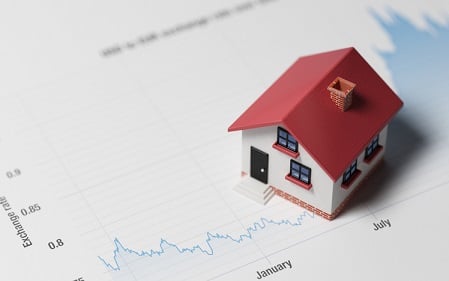This is the largest home-buying power increase in five years, RHPI says

December brought a significant housing affordability increase to prospective homebuyers, according to the December 2018 First American Real House Price Index (RHPI).
The RHPI measured last year’s price changes in single-family properties across the US and determined the impact of income and interest-rate changes on the consumers’ home-buying powers over time at national, state and metropolitan levels.
How did 2018 turn out?
“While housing affordability in 2018 fared poorly in comparison to 2017, decreasing 11.8% in December compared with a year earlier, the year finished strong in December thanks to declining mortgage rates,” said Mark Fleming, chief economist at First American. “Mortgage rates in December fell 0.23 percentage points compared with the previous month and household income increased 0.4%. The effect? A 3.1% increase in house-buying power, the largest monthly gain in more than five years. As a result, real house prices experienced the largest monthly decline (2.4%) since 2016. December delivered a significant holiday housing affordability boost to prospective home buyers.”
The key findings of the December 2018 Real House Price Index include:
- Real house prices decreased 2.4% between November and December
- Real house prices increased 11.8% year over year
- Consumer house-buying power – how much one can buy based on changes in income and interest rates – increased 3.1% between November and December, and declined 5% year over year
- Average household income has increased 3.1% since December 2017 and 55% since January 2000
- Real house prices are 12% less expensive than in January 2000
- While unadjusted house prices are now 2% above the housing boom peak in 2006, real, house-buying power-adjusted house prices remain 37.2% below their 2006 housing boom peak
What does this mean?
Fleming said that housing affordability is a function of three economic drivers: nominal house prices, household income and mortgage rates. Consumer house-buying power increases when incomes rise.
“Declining mortgage rates or declining nominal house prices also increase consumer house-buying power,” he said. “Our Real House Price Index (RHPI) uses consumer house-buying power to adjust nominal house prices, offering insight into shifts in affordability.
The increase in household income helped soften the impact of rising mortgage rates and the rapid growth of unadjusted house price on affordability, said Fleming.
“Rising mortgage rates, which increased from 4% to 4.6% in 2018, reduced consumer house-buying power by nearly $31,000,” he said “The growth in household income, however, increased consumer house-buying power by $11,000. The overall net effect in 2018 of the affordability tug-of-war between increasing mortgage rates and income growth was a $19,000 decline in house-buying power, compared with December 2017.
“However, the affordability trend shifted toward buyers in December, as mortgage rates fell and household income continued to grow. The December decline in mortgage rates from 4.87% to 4.64% boosted house-buying power by an impressive $10,000,” said Fleming. “That means a home buyer with a 5% down payment and a mortgage rate of 4.6% saw their house-buying power increase from $354,500 to $364,500. The monthly increase in household income further increased house-buying power to $365,600. Overall, house-buying power increased by $11,100 in December compared with the previous month, the second largest monthly increase in house-buying power since the beginning of the millennium.”



